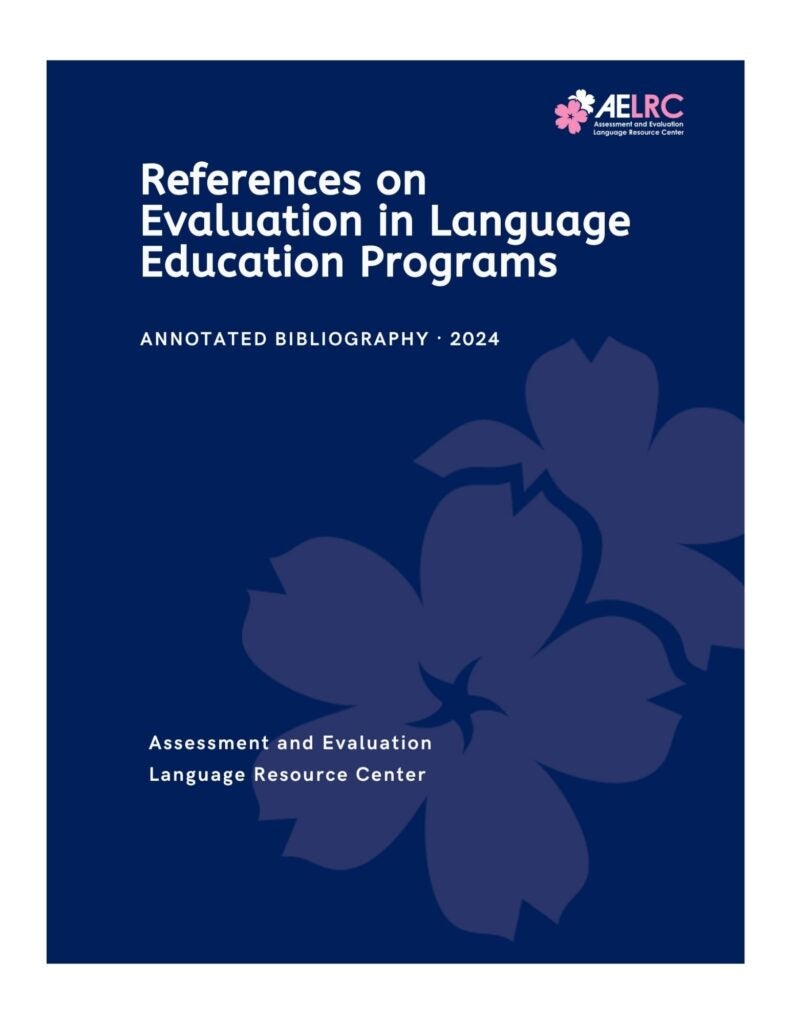Evaluation Bibliography
References on Evaluation in Language Education Programs
Cite as:
AELRC. (2024). References on evaluation in language education programs. Assessment and Evaluation Language Resource Center. Retrieved from
https://aelrc.georgetown.edu/evaluation-bibliography
Note: Last updated in 2024.
Download the bibliography as a pdf here.


